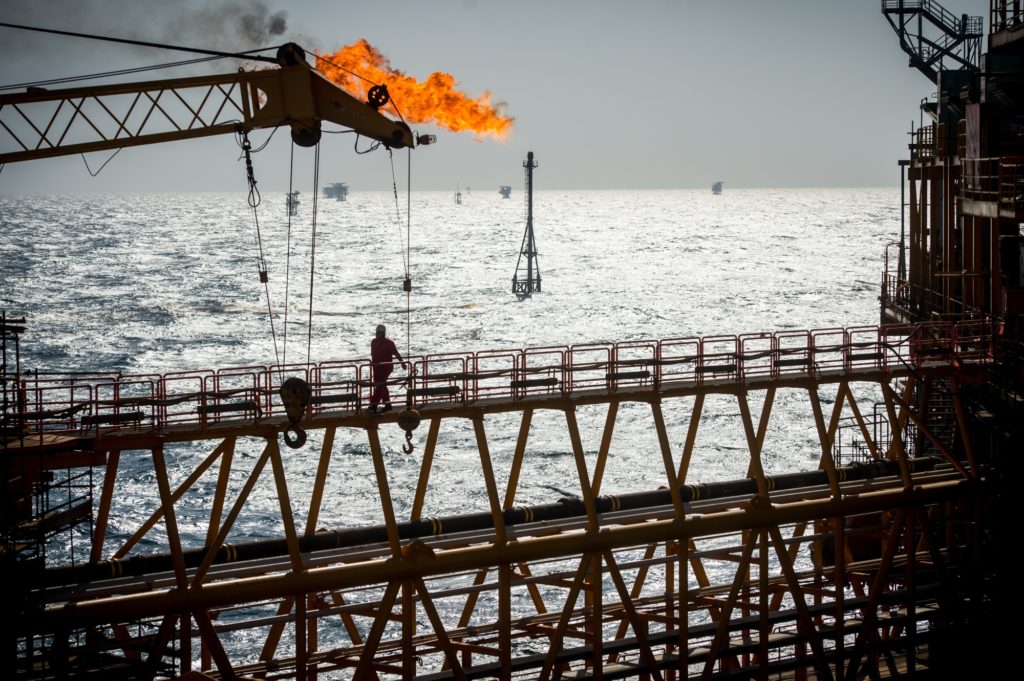
Oil continued on its rollercoaster ride, with volatility soaring on uncertainty over OPEC and American supply, a trade war between the U.S. and China and the Federal Reserve’s monetary policy.
Futures in New York were up 2.6 percent, recovering from a 3.5 percent drop on Thursday. Crude’s being whipsawed as fears persist that output cuts by OPEC and its allies won’t be enough to counter U.S. production. That’s sent a gauge of price swings soaring more than 110 percent over the past three months. Just this week, oil tumbled 6.7 percent on Christmas Eve, only to bounce back almost 9 percent in the next session.
A flight from risk assets worldwide due to everything from higher interest rates to political turmoil in Washington and Donald Trump’s trade war with China is also weighing on crude — which is set for its biggest quarterly loss since 2014. America’s surprise decision to grant waivers from its sanctions on Iranian oil to some buyers sparked a collapse in prices into a bear market after they reached a four-year high in early October.
“Oil markets, along with stock and bond markets, are expected to see higher volatility in 2019” due to risks including the U.S.-China trade war, Makiko Tsugata, a senior analyst at Mizuho Securities Co., said by phone from Tokyo. “Investors view production cuts pledged by OPEC and non-OPEC as not enough to balance global supply and demand.”
West Texas Intermediate crude for February delivery climbed $1.17 to $45.78 a barrel on the New York Mercantile Exchange at 8:10 a.m. in London. The contract fell $1.61 to $44.61 on Thursday. Total volume traded was about 13 percent above the 100-day average.
A measure of oil market volatility jumped to the highest level in more than a month on Thursday.
Brent for February settlement, which will expire Friday, rose $1.16 to $53.32 a barrel on London’s ICE Futures Europe exchange. The more-active March contract rose $1.14 to $53.87. The global benchmark crude traded at a $7.56 premium to WTI for the same month.
Russia, which is part of the OPEC+ coalition of nations that has agreed to cut output next year in a bid to stabilize the market, signaled it may ramp up production in the second half of 2019 if the producers don’t extend their deal.
Meanwhile in the U.S., an industry report showing crude inventories increased by 6.92 million barrels last week added to worries about an oversupply. That’s in contrast to expectations for a 3.4-million-barrel decline to be shown in government data due Friday. Stockpiles are trending higher at a time when American shale drillers are pumping at a record pace.
Volatile Markets
In wider markets, volatility reigned. The S&P 500 Index of U.S. equities posted its biggest upward reversal since 2010 on Thursday, a day after the gauge capped its largest advance since 2009. Despite the two-day gain, the measure is still down almost 10 percent in December alone.
Risk assets have been rattled by a raft of news that sparked uncertainty: whether Fed Chairman Jerome Powell’s job is at risk and what monetary policy he might pursue; whether a political impasse that’s led to a partial American government shutdown in the U.S. will be resolved; whether the U.S. and China — the world’s biggest economies — will be able to end their trade dispute. With sentiment weakening, some market moves are being described as “ completely bizarre.”
Other oil market news: China is the latest victim of the wild swings in oil prices that have roiled trading firms across the globe this year. Two top officials at Unipec, one of the country’s most powerful trading companies, were suspended this week following losses on bets related to crude prices in the second half of the year. Gasoline futures gained 1.7 percent to $1.3256 a gallon, after falling 2 percent on Thursday.
Recommended for you
